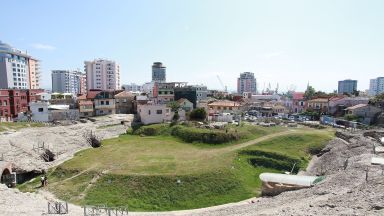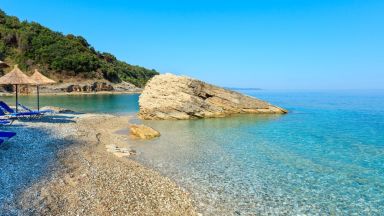Durrës: The Complete Guide
Durrës is the Republic of Albania’s second most populous city and was once briefly its capital. This ancient and historic city is now almost an extension of Tirana, being only an hour away by car.
Located on the Adriatic Sea, it has the biggest and most popular stretch of beach in Albania. In the summer the beaches become almost too popular and very crowded.
In Roman times Durrës was known as Dyrrachium and remnants of this can be seen in its amphitheater, Byzantine forum and the artifacts in the archaeological museum. The Rock of Kavajë is about 8 km away from Durrës, and this is where, in 48 BC, during Caesar’s Civil War, Caesar fought against Pompey.
King Zog I built a palace here in 1937 and is well worth a visit.
Visiting Durrës for the first time and wondering what are the top places to see in the city? In this complete guide, I share the best things to do in Durrës on the first visit. Top help you plan your trip, I have also included an interactive map and practical tips for visiting!
This website uses affiliate links which earn a small commission at no additional cost to you.
History of Durrës
The headland at the north of the Bay of Durrës forms a natural harbor, which ships have anchored at since the 7th century BC. The city was first found by ancient Greek colonists from Corinth and Corcyra (modern-day Corfu) in 627 BC. It was then known as Epidamnos and was in the ancient region of Illyria. The original settlers may have been attracted by the silver mines inland. The colony prospered until Corinth and Corcyra, fell out and fought a war with each other.
The Illyrian kings Glaukias and Monum in round 4th century BC ruled over the growing city and monted their own coins, some of which can be found in the Durrës Archaeological Museum.
It later became known as Dyrrachium, and with a population of 40,000 became a significant part of the Roman Empire and its successor the Byzantine Empire. The Via Appia connected Rome to Brindisi, in southeast Italy. Across the Adriatic the road changes it name but continues as the Via Egnatia, which starts in Durrës and Apollonia and travels across the interior of the Balkan Peninsula to Constantinople or Byzantium in the east. In the 4th century CE it became capital of the Roman province of Epirus Nova. The Romans built the large amphitheater here in the early 2nd century.
In the Middle Ages, the city and its surroundings were fought over by the Bulgarian, Venetian and Ottoman dominions.
After the Albanian Declaration of Independence, the city served as the capital of the Principality of Albania for a short period of time. During the second world war, the city was under the control of Italy and Nazi Germany. The city expanded greatly during the years of Communism in Albania.
14 Best places to See in Durrës
This complete guide to Durrës not only tells you about the very best sights and tourist attractions for first-time visitors to the city but also provide insights into a few of our personal favorite things to do.
This is a practical guide to visiting the best places to see in Durrës and is filled with tips and info that should answer all your questions!
Mausoleum of Martyrs, Durrës

Location: Muzeu i Deshmoreve dhe Salla e Relikeve te Luftes, Rruga Aleksander Goga Durrës Albania | Distance: 0.40km
Visiting Mausoleum of Martyrs, Durrës
Well of Tophane, Durrës

Visiting Well of Tophane, Durrës
Durrës Byzantine Forum

Location: Rruga Aleksander Goga, Durrës, Albania | Distance: 0.40km
Visiting Durrës Byzantine Forum
Durrës Great Mosque

Location: Rruga Aleksander Goga Durrës Albania | Distance: 0.60km
Visiting Durrës Great Mosque
Durrës Amphitheatre

Location: Rr e Kalasë | Hours: 9am-7pm Apr–mid-Oct, to 6pm mid-Oct–Mar | Price: 200 lekë | Distance: 0.70km
Visiting Durrës Amphitheatre
Aleksandër Moisiu’s House-Museum

Location: Rruga Kolonel Tomson Durrës Albania | Distance: 0.80km
Visiting Aleksandër Moisiu’s House-Museum
Durrës Castle

Visiting Durrës Castle
Durrës Archaeological Museum

Location: Rr Taulantia 32, Durrës, | Hours: 9am-7pm | Price: 300 lekë | Distance: 0.90km
Visiting Durrës Archaeological Museum
Durrës Beach

Visiting Durrës Beach
Golen Beach

Visiting Golen Beach
Via Egnatia

Location: Bulevardi i Palmave Golem Albania | Website | Distance: 10.50km
Visiting Via Egnatia
Generals Beach

Visiting Generals Beach
St. Peter's Bay

Visiting St. Peter's Bay
Spille Beach

Visiting Spille Beach

